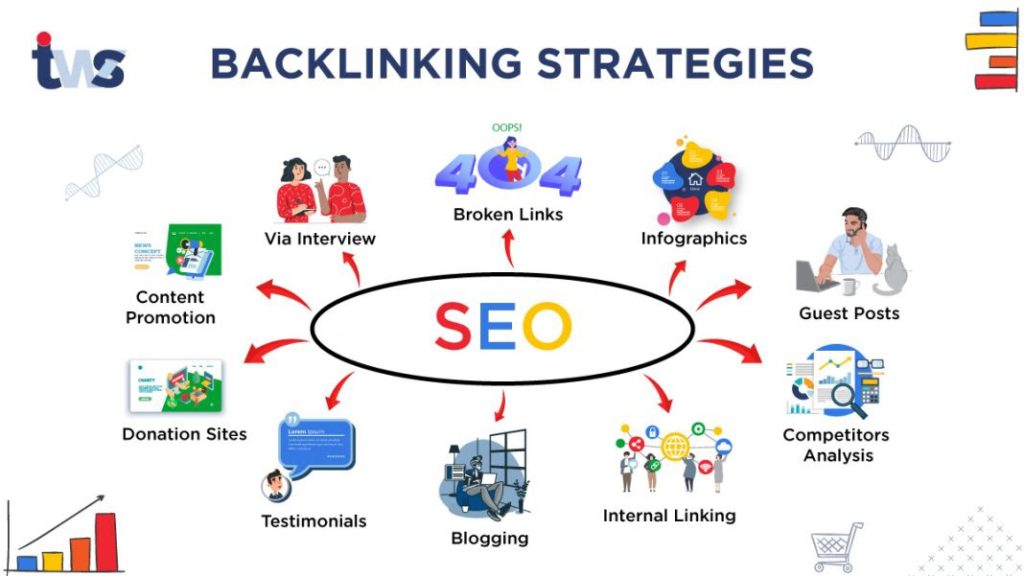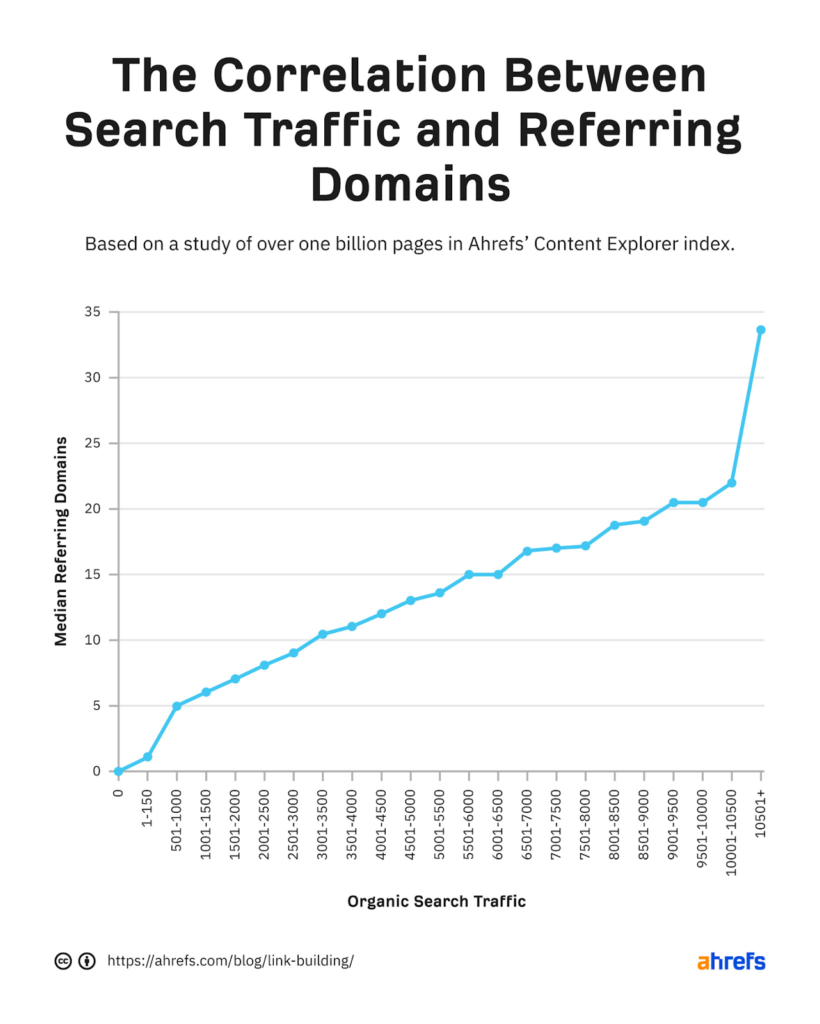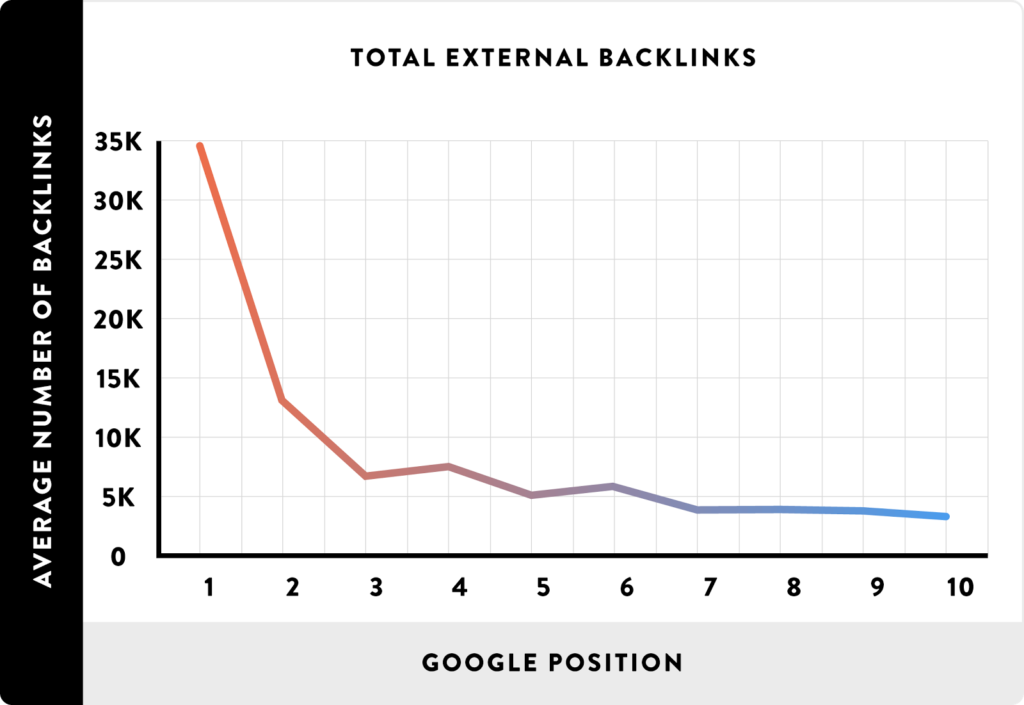
Table of contents
- What is link building?
- Why is link building important?
- How to build links for SEO
- Conclusion
- FAQs
7.5 million. That’s the number of blog posts published every single day in 2021. The content marketing industry has been growing exponentially, but how do you set yourself apart from others? By establishing credibility and trustworthiness. Others should rely on you when they need information about something.

This is the reason why Neil Patel, Brian Dean, and others in the industry have stood out (not to mention that their content has worked for many.) But what is SEO link building? Whether your website/webpage link is shared on social media or cited by another website, backlinking shows the audience that your content is reliable, credible, and trustworthy. Getting backlinks to your blog helps boost its SEO ranking. In this blog, we tell you how to effectively go about link building and discuss some SEO link-building best practices.
So how can you create content that people would want to read? Link building could be the answer. The first step in link building is creating linkable assets, i.e., content people would want to provide backlinks to. Some examples include infographics, charts, diagrams, GIFs, and other visual assets; original, data-driven research; definitions or coined terms; and how-to posts, tutorials, and in-depth guides.
What is link building?
Links are rightly known as the currency of the web. Link building is the process of getting people/websites to refer to the pages of your website through a link. As Googlebot is crawling through billions of pages every day, they also look for links those pages may contain. This makes it crucial for you to employ link-building best practices for your website. Before delving into the process of link building, let’s know more about the three primary types of links:
1. Organic links
How wonderful would it be if you could just focus on your content and others would automatically link back to you? Organic linking is when you don’t have to ask or reach out to anyone to get backlinks to your page. These indicate that your website is thought of as highly reliable.
2. White hat links
White hat links are a means to drive traffic to your website using SEO best practices. We will learn about them further in this blog.
3. Black hat links
This is spammy, poor-quality link building that you would want to avoid at all costs. Black hat link building goes against Google’s webmaster guidelines, and can even lead to your website getting banned.
Here are three primary link building methods:
- Earn organic links from people who visit and like your page.
- Rebuild and repurpose broken links.
- Request a backlink.
Why is link building important?

How is backlinking beneficial for your website? It increases the credibility and popularity of your page because other websites are referring to it. Search engines use links to discover new, high-quality web pages and to determine how well a page should rank in their search results.
This is a report by Ahrefs that shows the correlation between search traffic and the number of pages that link to a particular page.
In short, links are like votes. Pages with more and better links lead to more authority, credibility, and thus, higher rankings on search engine result pages (SERP). And that’s precisely what we want from SEO link building at the end of the day, right?
However, while link building is important—and more links mean better results—link building doesn’t mean that every other website is linking to you. Moreover, not all backlinks will be equally valuable to you.
How to build links for SEO
How can you make your page link-worthy? Organic links are nirvana for SEO strategists, and brands have to work hard to create web pages that others would want to link to.
As a writer, your role is to create high-quality content—mentioning accurate facts, ensuring readability, etc.—and integrate SEO best practices into it. But this is a long-term approach. How can we get there quicker? Here are a few ways.
1. Submit guest blog posts
Guest blogging means writing a blog on another or more popular website and incorporating links to your own page in it. While this is a popular link-building method, you need to be careful not to spam the reader with too many links.
Think of link building as a byproduct. Consider writing for a platform that falls under your niche and doesn’t create a blog keeping solely link building in mind. While that is your primary purpose, it shouldn’t sound spammy. Instead, it should offer valuable information and insights to people. For this, you need to know your target audience well. Reply to comments on your post—it makes the reader feel heard. This is an important part of relationship building, which can help you earn links.

2. Turn to resource pages
Resource pages provide information concerning specific topics. This is usually in the form of links to external sources. After looking them up on Google, you must determine if the page is relevant to the information you want to give out. It could be in a similar niche as yours, or serve the same or similar target audience.
You can use various online tools to check metrics like URL rating (UR) and domain rating (DR) of the page you plan to pitch to. The higher these metrics are, the better. An additional tip: personalize your pitch. Tell them how your post would contribute to their page and why you want to write for them.
3. Social links
Social linking is when someone circulates your link on social media platforms. Although social links are not high-quality links for Google to consider, when they appear consistently and in huge numbers, Google may start recognizing your page, and eventually, your website. A Tweet, Youtube video, or Instagram story containing a link to a web page are all examples of social linking. When building links on social media, ensure that the content is relevant, valuable, and accurate. Otherwise, it is just spam and the platform might restrict you from posting at all.
4. Rebuild broken links
Have you ever found a page with a link that either shows you an error or doesn’t seem to lead you to a page you expected? Those kinds of links are called broken links. What if you could fix them? Tools such as LinkMiner can help you find such links. Then reach out to the publishers of these pages and pitch your content as a replacement and whether they would like to link to your page.
5. Create internal links
Internal links are those that take the reader to other pages on the same website. For example, if you write about exercises to lose belly fat, you can add internal links to posts that talk about foods to eat to lose belly fat, exercises to lose fat from other parts of the body, etc. This is one of the easiest link-building practices and is highly effective from the point of view of SEO.
6. Use directories
You can pitch your website to applicable industry directories. This method was recommended by Google earlier. But after it was misused by many websites, Google has started considering it less valuable. Although directories are not as prevalent today, if you are in a niche industry, they might still help. Avoid low-quality directories or those that are unrelated to your industry.
7. Get on “the best of” lists
You may have come across listicles that sound something like this: “5 Best Places to Submit Your Poetry”, “15 Best Plagiarism Tools”, and so on. These articles attract a lot of readers. Being listed and linked to one such (credible) post can do wonders when it comes to driving traffic. Simply reach out to these websites and explain to them how your services are different or better than the rest.
Conclusion
Always have compelling reasons for others to link to your page. Give people a strong incentive to link to your article; ask yourself, “What’s in it for them?” The most important thing to remember here is that link building is done not only to boost SEO but to build relationships with your target audience.
Here are a few things you can do to craft a good backlink strategy:
- Create useful content for their website through guest blogs.
- Show them a better resource than what they are currently referring to (this is known as the skyscraper technique.)
- Rebuild broken links
- Offer link exchanges.
- Reach out to resource pages.
- Find broken or missing links to your website, and add or replace them accordingly. This is known as link reclamation.
Don’t buy links if you want to rank well in the long run. In fact, purchasing links could be considered spam and penalized by Google. It is best not to put your website through that risk.

FAQs
Here is a step-by-step procedure to find prospects and pitch to them:
1. Set up a link building tool
2. Add keywords and competitors
3. Identify and review your list of prospects
4. Send your pitch
People often ask whether the quality of links is more important than quantity. While you should strive for high-quality links, you should also understand that it might be extremely difficult to get one, unless you are an established and well-known brand. So should you focus only on the quantity? No. While quantity is important for SEO, you want to avoid low-quality pages to backlink your page. Even though Google may ignore it at first, it may demote the page later on. Most experts focus on medium-quality links, thereby striking a balance.
The most important type of link is the organic dofollow link. This is the link that search engines can crawl through. The least important type is the nofollow and black hat links. Nofollow links are like regular links, except that they’re specified as “nofollow”, i.e, the search engine has been instructed to not crawl through the linked page.
1. Backlink research tools:
-Moz
-Majestic
-Ahrefs
-Semrush
-SEO Spyglass
-SE Ranking
-LinkMiner
-Nightwatch
2. Content research tools:
-Buzzsumo
-Ubersuggest
-Google Adwords
-AnswerThePublic
3. Link prospecting tools:
-Linkody
-BuzzStream
-GroupHigh
-NinjaOutreach
-Link Prospector
4. Web monitoring tools:
-Google Alerts
-Mention
-Brand24
5. Email outreach tools:
-Hunter.io
-Voila Norbert
-MailShake
-Pitchbox
-Snov.io
-Neverbounce
The purpose of link building and backlinking is the same, i.e, to get more traffic and rank better. However, there is a slight difference between the two. Link building can be both on-page and off-page. Even if a page is linking to another page on the same website, it is a part of link building (internal link building). But backlinking is often off-page, i.e., a page on another website is linking to a page on your website.
A good backlink strategy should be these three things:
1. Natural
Website owners agree to put your link onto their website naturally, because they feel like it would be a good addition, and not because of monetary incentives or manipulation tactics. The intent is to offer value to the target audience, and not fool the search engines.
2. Reputable
The PageRank algorithm used by Google measures the importance and reputation of web pages. According to Google, websites that are renowned or more important tend to earn more links from other websites.
3. Relevant
This is a no-brainer (what is SEO link building without relevance?) Search engines check whether the linked page is relevant to the page that links it. They assume that if both pages are not relevant to each other, then the linked page might be fake or spam.
Latest Blogs
Explore how Google’s 2025 AI search updates triggered ranking chaos. Learn actionable strategies to adapt your SEO for AI Overviews, zero-click searches, and SERP volatility. Stay ahead now.
Learn how to rank on AI search engines like ChatGPT, Perplexity, and Gemini by optimizing your content for authority, structure, and relevance. Stay ahead in AI-driven search with this strategic guide.
Explore the best healthcare SEO services for your medical practice. Improve online visibility and effectively reach more patients in need of your services.
Get your hands on the latest news!
Similar Posts

Artificial Intelligence
6 mins read
The Role of AI in Digital Marketing: AI Article Generators Transforming Content Creation

Artificial Intelligence
4 mins read
How AI Content Creator Is Shaping the Future of Digital Content

Digital Marketing
3 mins read